LOUISA CORNELL
Anyone who knows the Brits knows at least these two things.
1. No one does ceremony as well or for as many events as them.
2. No one assigns specific places to specific events as well as they do.
What else might account for the existence of specific routes known as corpse roads recorded from as early as the medieval era? In fact, some research indicates they might well have been assigned and traveled from a time as far past as the Neolithic period. But more about that later.
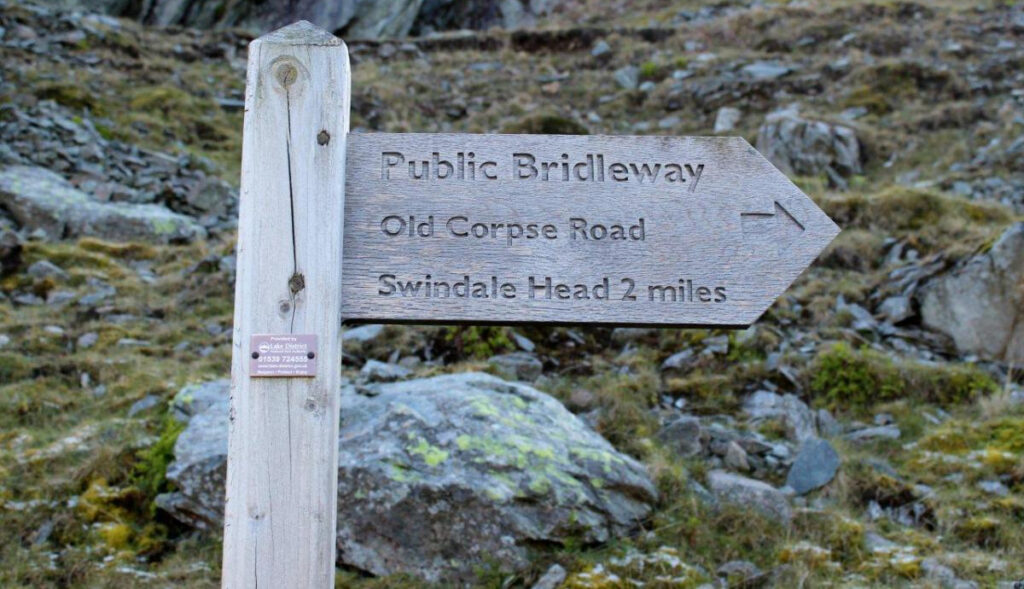
These paths were known by a variety of names and whilst many are lost and long forgotten, some are still apparent and even marked by signs. Their names included:
Corpse road Burial road
Coffin road Lyke road or way
Bier road Funeral way
Lych road or way Church way
NOTE: Lych is the Old English word for corpse.
Now that we have the “what” out of the way, let us discuss the “why.”
Up until the late 16th to early 17th centuries the larger mother churches in England reserved the right to conduct burials for themselves. And for a very good reason. Burials brought in money to the church’s coffers. As a result, many people who died in rural villages or any distance from a mother church had to be conveyed to these churches for a proper burial. Most of these people were poor. Many did not own a horse or a cart, and if they did, these equipages could not be spared for the long trip to one of these churches. They had work to do at home.
Therefore, more often than not, the dead person had to be carried by men from home or from their home village great distances on foot to be afforded the aforementioned proper burial. Generally the party consisted of eight men who worked in teams of four in a procession that might consist of simply those eight men or might include those members of the family and even friends who could afford to take the time to attend. However, most of the time, the body was conveyed separately over the corpse road whilst the mourners traveled a more direct route.
It is important to remember that quite a few people during these eras could not afford a coffin. Many villages and most mother churches had a coffin that was used to convey a body from home to the church. It would then be left at the church for the next person to use. This multi-use casket could be made of wood or could be made of wicker, a large human-sized wicker basket with two handles on each side. In these cases, bodies were buried in shrouds.
A few logistics when it comes to corpse roads…
Corpse roads could be as short as five or six miles and as long as ten to sixteen miles. The corpse road from Keld to Grinton in Yorkshire, known as the Swaledale Corpse Way is every bit of sixteen miles.
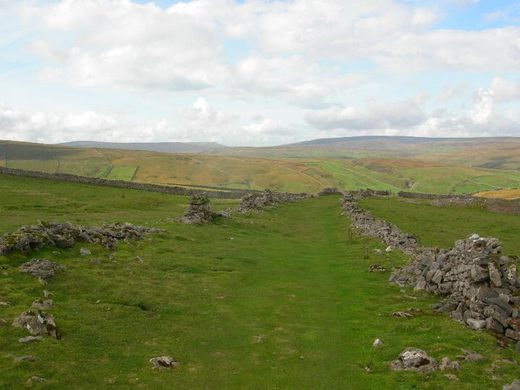
Corpse roads were not a strictly British tradition. There were and are corpse roads all over Europe. Most of these, however, are lost to history. As late as the 19th century Ordinance Survey maps in Britain still documented 42 of these funerary ways.
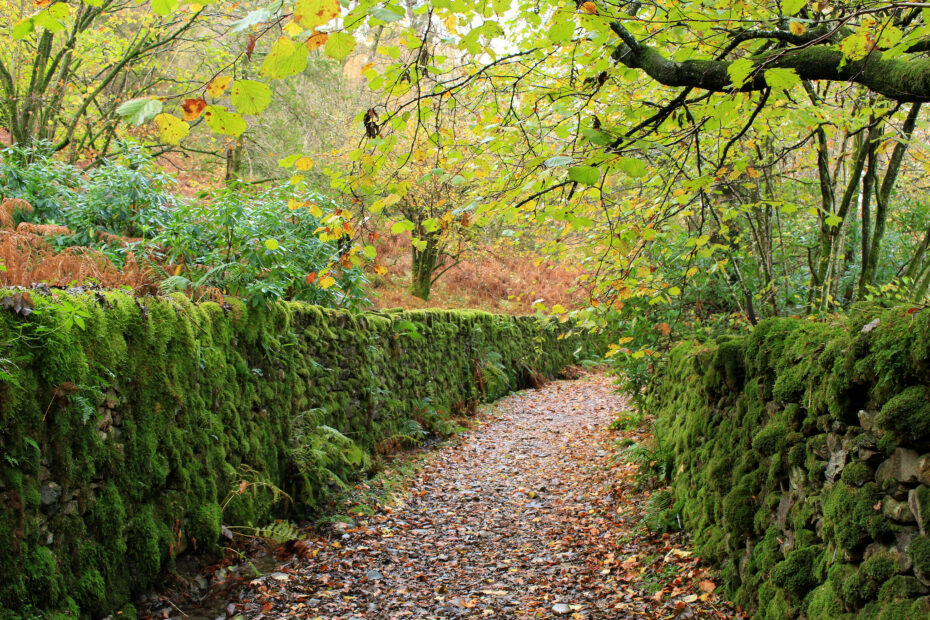
The directions and locations of corpse roads were determined by a few factors. Some of these factors were practical. Some, frankly, were deeply seated in tradition and superstition.
Practicalities
1. The corpse roads tended to go immediately away from the village. No one wanted a corpse carried by their front door.
2. There was a bit of folklore about corpse roads that declared any road by which a corpse traveled became a public right of way. There is no legal evidence to support this, but even 19th century landowners still posted signs that forbade any funeral processions from crossing their property. This meant large swaths of land were removed from the possible route of a corpse road.
3. There were two schools of thought on the actual path of a corpse road. Some parts of Britain held the belief that spirits of the dead could only travel in a straight line. Therefore routes were planned in a straight line from a particular village to the mother church in order to ensure the spirit traveled with the corpse all the way to the burial ground. They didn’t want him hanging about in fields or worse in taverns along the way because he got lost and couldn’t find his way to his own funeral.
There was also a theory that a coffin sterilized the land along the way it was carried because the dead were forced to walk that path until their soul was purged. Those who believed this made certain the corpse road was a straight route which meant the way passed over whatever terrain was in the way in order to achieve that straight line.
The other school of thought was that since spirits could only travel in a straight line, the corpse road needs must be a meandering path to ensure the spirit did not find its way back home. This accounts for some of the wandering, twisting turning aspects of some corpse roads. As much as one might love the dearly departed, one certainly did not want him showing up at the supper table two weeks after the funeral.
The tradition of the straight line is rooted in those ancient burial routes mentioned at the beginning of this post. Neolithic earthen avenues called cursuses linked burial mounds. In fact, these routes ran for miles, and as seen especially from the air are straight, or straight in segments, connecting funerary sites. There is even one just outside Stonehenge.
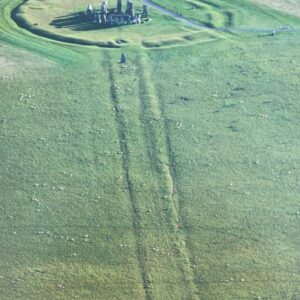
4. In aid of keeping that straight line route, corpse roads passed over every sort of terrain imaginable with little to no thought as to the effort it might take to haul a corpse over said terrain. A section of the Pennine Way follows the historic corpse road from Garrigill to Kirkland over Alston Moor and over Cross Fell, a height of 893 meters. In the 16th century, one funeral party, overcome by a snowstorm, reputedly abandoned the coffin on the fell for a fortnight.
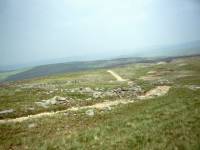
5. All corpse roads were set to cross water at some point in the journey. Whether it be a stream, a brook, or a river the path had to take the party carrying the corpse over water. Why? Because spirits supposedly could not cross over water. Once the body crossed water there was no way a spirit could find his or her way back home.
6. Routes often were extended in order to avoid passing over farmers’ fields. This was due to the belief that should a corpse pass across a farmer’s field that field would be soured and never again produce good crops. Anyone traveling in the UK today will often see an unploughed strip of land along the edge of fields wide enough for two men to walk abreast. These strips were left deliberately so that the corpse road could travel along the fields without crossing and souring the land.
Superstitions
As one can perhaps imagine, there are a great many superstitions associated with corpse roads. Some had explanations. Some defied explanation, but they were held steadfastly by those who were raised to believe them. Which accounts for some of the odd quirks associated with traveling and reaching one’s final destination on a corpse road.
1. Throughout the route, the corpse is carried feet first to the graveyard. In other words the body must be carried with the feet pointed away from the departed’s home. Why? To prevent him from finding his or her way home.
2. The coffin was never to be placed on the ground for the coffin-bearers to rest. Why? Apparently there was a chance if the coffin touched the earth the spirit of the departed might wander off. Therefore, flat stones, known as coffin rests or corpse crosses, were established along the corpse road so the bearers might place the coffin there and rest before continuing on their way. This was often where the team of bearers would switch out so as not to tire themselves along the way.
These coffin stones were usually found in lonely places away from any houses or villages. Many had their own legends attached to them. The one found on the corpse road between Keld and Muker in Yorkshire lies on Kisdon Fell just over Ivelet Bridge. It is said to be haunted by the ghost of a headless black dog. No explanation. Just a headless black dog hanging about the coffin rest.
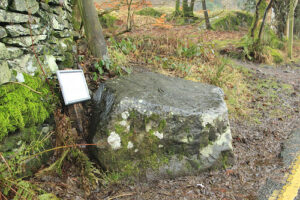
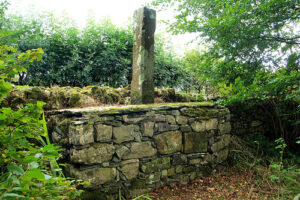
As you can see, the coffin rest came in a variety of styles, but they all served the same purposes – to give the bearers a rest and to keep the departed from wandering off on the way to his or her funeral.
3. The corpse candle is another tradition associated with the corpse road, especially in Wales, the land of my ancestors. This was a mysterious light that supposedly was seen traveling a corpse road the night before a death. The light would be seen traveling from the churchyard to the front door of the person destined to die and then back to the churchyard. This was the spirit of the soon to be departed tracing the route they were about to take.
The light would travel close to the ground and disappear into the ground where the burial was to take place. Some said the lights were the spirits of the dead trying to lead travelers astray. Other legends declared them to be the spirits of unbaptized or stillborn babies caught between heaven and hell.
4. Crossroads were considered the most dangerous part of a corpse road. According to superstition, crossroads were where the veil between this world and the next and this world and the underworld was at its thinnest. It was believed the devil could appear at a crossroads. Crosses were placed at these intersections (hence the name) to protect travelers from the devil and any wayward spirits who were lost on their way to the graveyard. Other talismans called witch balls were also hung at crossroads. A witch ball consisted of a bottle or enclosed glass vessel which contained threads and charms. The threads were there specifically to ensnare passing spirits thus trapping any evil or negative energy and keeping the way safe for the living.
The final stop
Once the bearers reached the mother church there was one last tradition that marked the end of the corpse road. The bearers would take their burden to a specific door or gate at the church and wait for the clergy to come and assume responsibility for the body. Members of the clergy and their staff would be in charge of making final preparations to the body for burial. Here was also where the community coffin would be left for the next person in need of it.
These doors were often called leper doors and the gate was called the lych gate. (Remember, lych was the Old English word for corpse.) Again these gates might be very simple or quite elaborate. My first encounter with a lych gate was in the village of Kelsale in Suffolk where I lived for three years as a child.
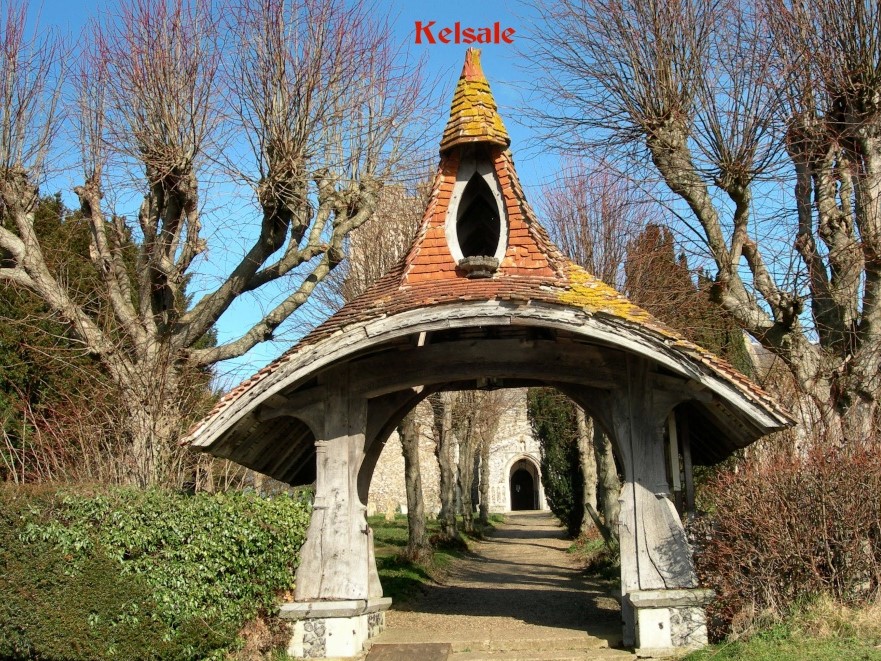
For more about lych gates check out our earlier post on the subject.
https://numberonelondon.net/2017/06/meet-me-at-the-lych-gate/
Corpse Roads Today
As stated at the beginning of this post, many of these corpse roads are still known and visible today. In fact, hikers include these pathways on their lists of places to hike throughout the UK. There are, in fact, road signs that will direct hikers to these roads when possible. Some of the most popular are:
Ambleside to Grasmere, Cumbria
Black Mountain, Carmarthenshire
Lych Way, Devon
Coffin Route, Outer Hebrides
Buttermere Corpse Road, Cumbria
Kintail, Highland
Garrigill to Cross Fell, Cumbria
Swaledale Corpse Way, North Yorkshire
The obligatory ghost story
Of course there are ghost stories aplenty associated with nearly every corpse road in England. Along the Elksdale Corpse Road there is the story of the family who made the mistake of carrying their departed son on horseback to the mother church. Crossing Burnmoor the mist was thick and eerie. Something spooked the horse which took off with the coffin and body strapped on his back. The party searched and searched but found neither the horse nor the son.
The news of what had happened to her son’s corpse so devastated his mother that she collapsed and died. Low and behold, the funeral party had not learned their lesson. The horse on which they conveyed her body took fright and bolted as well. In their search for her they found the son’s horse, alive, body and coffin still strapped to his back. However, no matter how far and wide they looked they never found the mother or her horse.
To this day there are reports of a ghostly horse with a coffin strapped to its back appearing out of nowhere to frighten the wits out of anyone foolish enough to follow the Elksdale Corpse Road.
Some advice? Don’t hike the corpse roads at night. Even the locals won’t do that. Just in case.
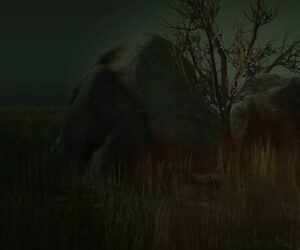
“Now it is that time of night, that the graves all gaping wide, every one lets forth his sprite, in the church-way paths to glide.”
A Midsummer Night’s Dream
William Shakespeare